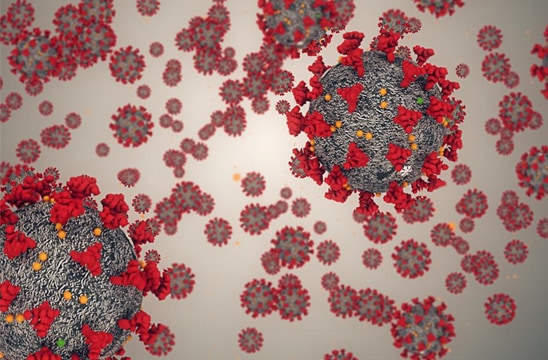
COVID-19 seems not to discriminate, affecting people of all ages, races, and genders across the globe.But the degree to which each person reacts to the intrusion of the virus has varied drastically.There are people who actively carry the virus but show no symptoms!others experience symptoms that include coughing, fever, and muscle aches, but can be managed within the confines of the person's own home.Still others suffer the most severe symptoms, including difficulty breathing, persistent pain and pressure in the chest, and the need to seek medical attention and monitoring.
Factoring in immune system reaction

The way our immune systems react appears to be a leading factor in the varying symptoms subjects endure.When our bodies recognize something as foreign, our immune system kicks into action, mounting an immune response that involves the recruitment of immune cells and the subsequent release of cytokines.However, if the response is too great, it can potentially begin to damage healthy cells.This is often observed during a cytokine storm, where cytokine production is excessive and may lead to severe complications or death.
Interesting findings from Chinese researchers
Researchers at the Guangzhou Respiratory Health Research Institute in The First Affiliated Hospital of Guangzhou Medical University observed patterns between the number of immune cells and cytokine levels.Wenjun et al.必威体育登录手机utilize the Agilent NovoCyte flow cytometer to help study the immune response in subjects with varying severity of COVID-19 symptoms.Compared to healthy individuals, COVID-19–positive subjects exhibited substantially lower numbers of T, B, and NK cells, and the cytokine IL-6 concentrations in serum were strongly elevated.Additionally, the level of IL-6 in the serum correlated with the observed degree of lung damage!subjects with higher IL-6 concentrations had more lung damage as detected by radiography.
A second group at the School of Life Science and Medical Center in the University of Science and Technology of China, Younggang Zhou et al., reached similar conclusions in terms of the amount of T cells or CD14/CD16 double-positive monocyte subsets, as well as the level of cytokine production.The authors compared three groups of individuals: healthy, COVID-19–positive not requiring ICU treatment, and COVID-19–positive requiring ICU treatment.They found that all COVID-19–positive subjects had a significantly lower abundance of CD4+, CD8+ T cells, and monocytes compared to healthy individuals.

The inflammatory cytokine IL-6 was also found to be produced in a higher percentage of CD4+ T cells in subjects requiring ICU treatment, as compared to healthy individuals.A similar increase in IL-6–producing cells was detected in the CD14/CD16+ monocyte population in the ICU subjects compared to that of non-ICU or healthy individuals.
How the NovoCyte flow cytometer helps
The researchers were able to use the NovoCyte flow cytometer to rapidly test immune cells from blood samples and separate out the individual types of immune cells for analysis.They were also able to detect the immune response through the detection of cytokine-producing cells or by detecting the cytokine directly in the serum of infected individuals.By analyzing the cell samples one by one, and processing thousands of cells per second with high accuracy, the NovoCyte flow cytometer has allowed researchers to obtain meaningful results faster and easier.Being able to accurately and rapidly gather this information helps researchers to better understand this new virus.
Researchers around the world are working in earnest to understand all aspects of the coronavirus responsible for the COVID-19 pandemic.This concerted effort is critical for generating the knowledge needed to mitigate the effects of this global emergency.Collective organizations, using multiple approaches and many different types of instrumentation, will be required to produce the data needed to support a greater understanding of COVID-19 and hopefully lead to solutions and potential treatments.
Supporting Resources:
- Video:https://www.youtube.com/watch?v=LLOIhaVblKU
- Research publication:https://www.biorxiv.org/content/10.1101/2020.02.12.945576v1